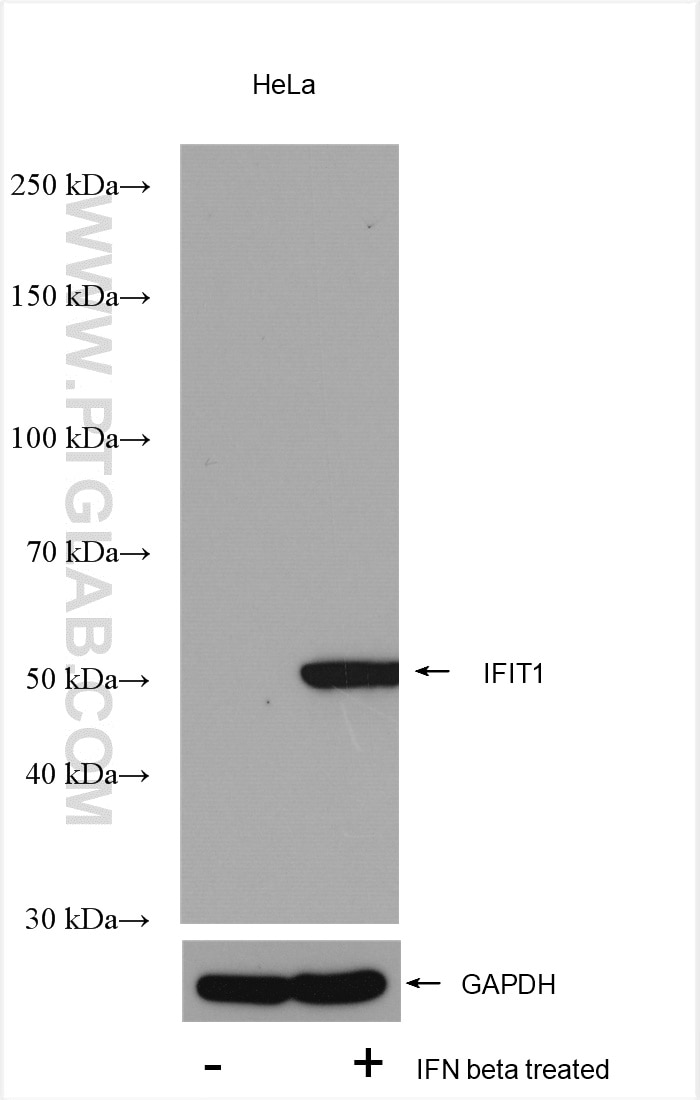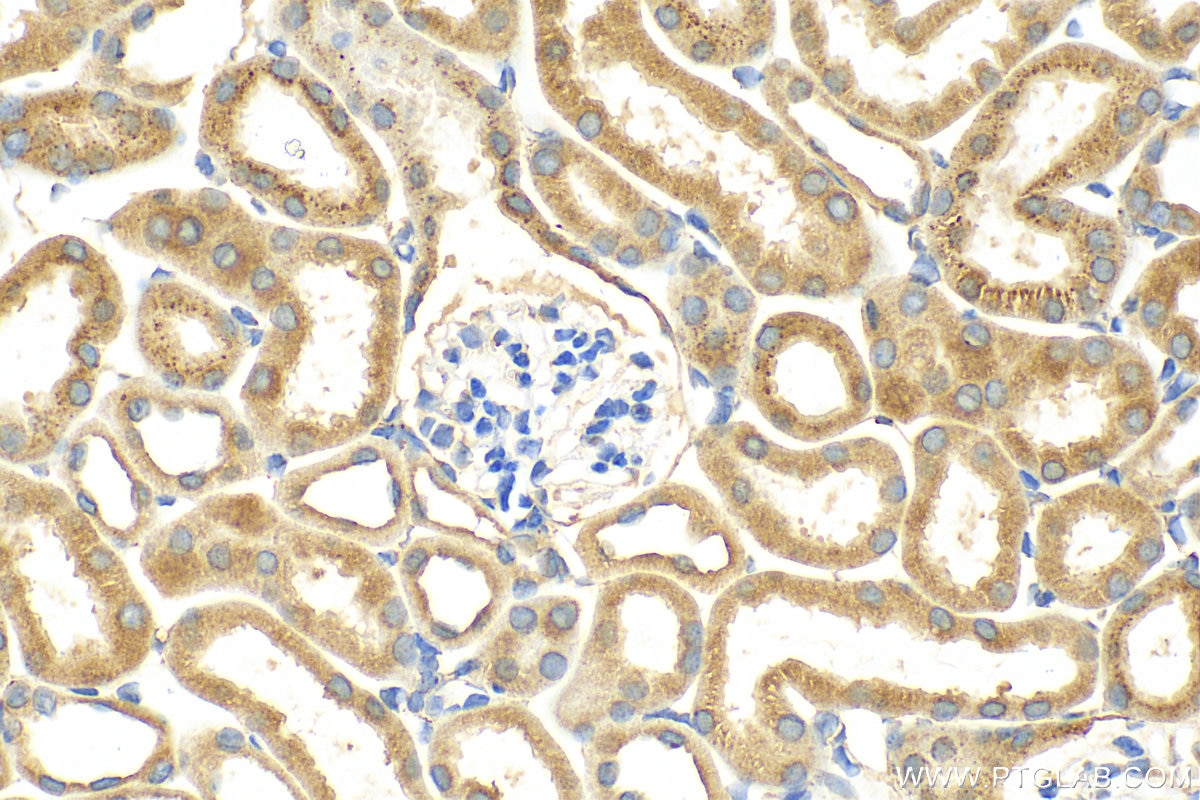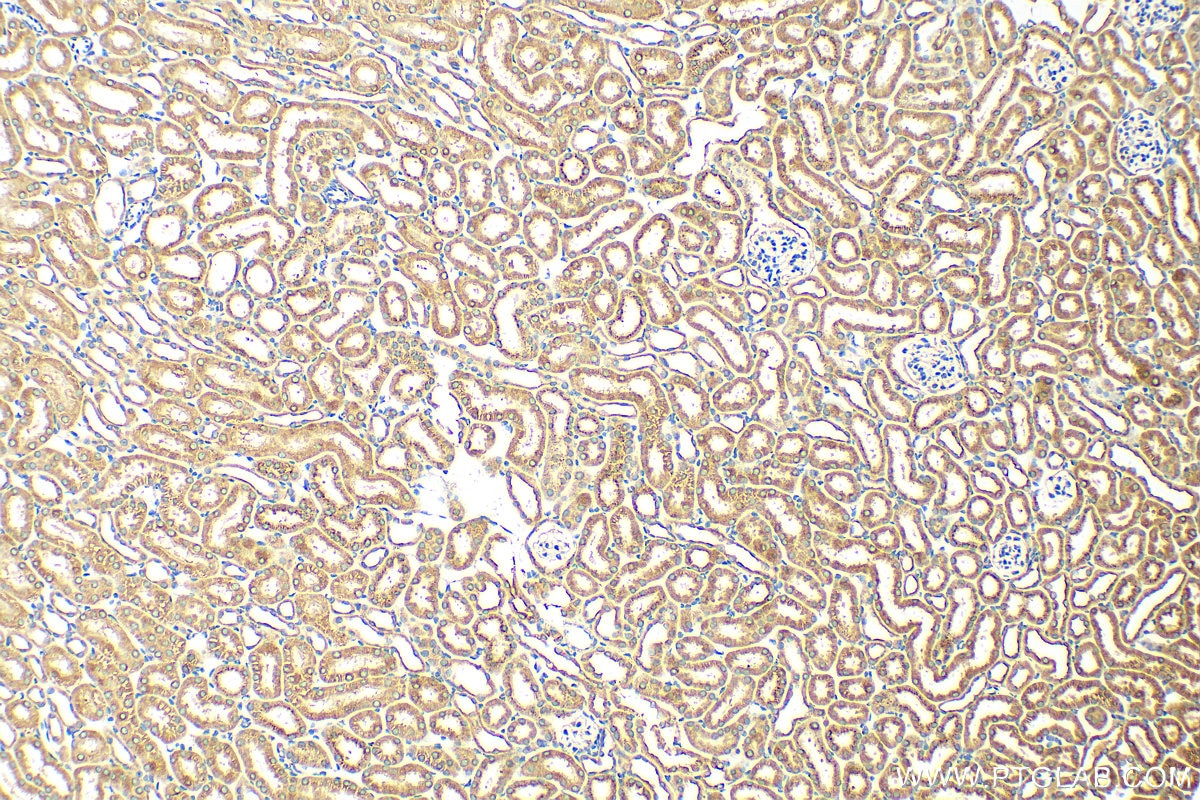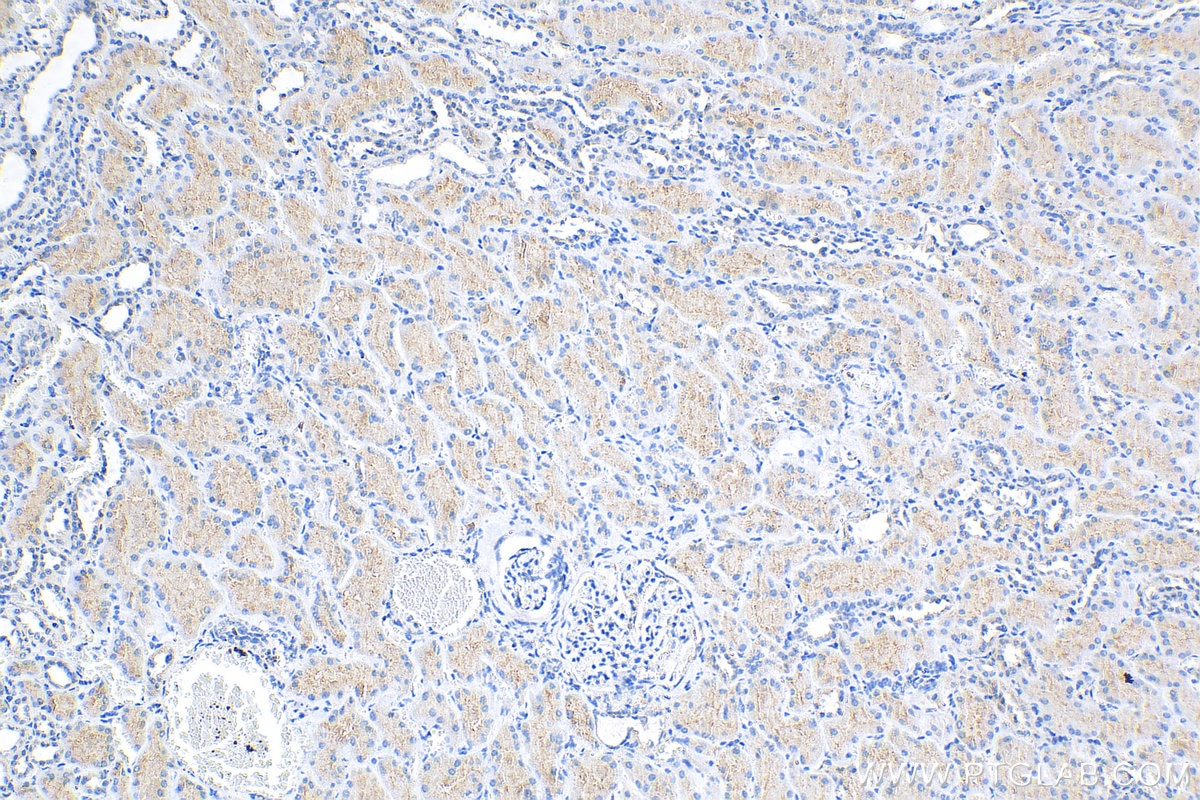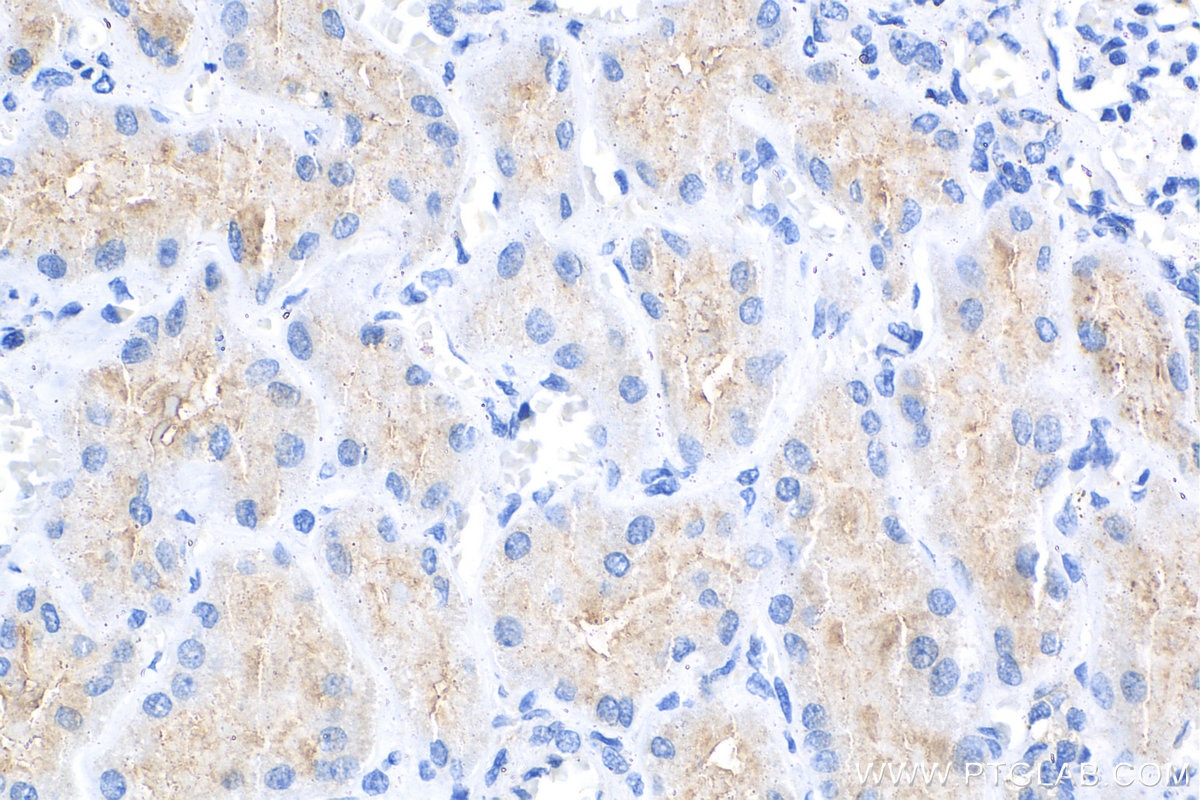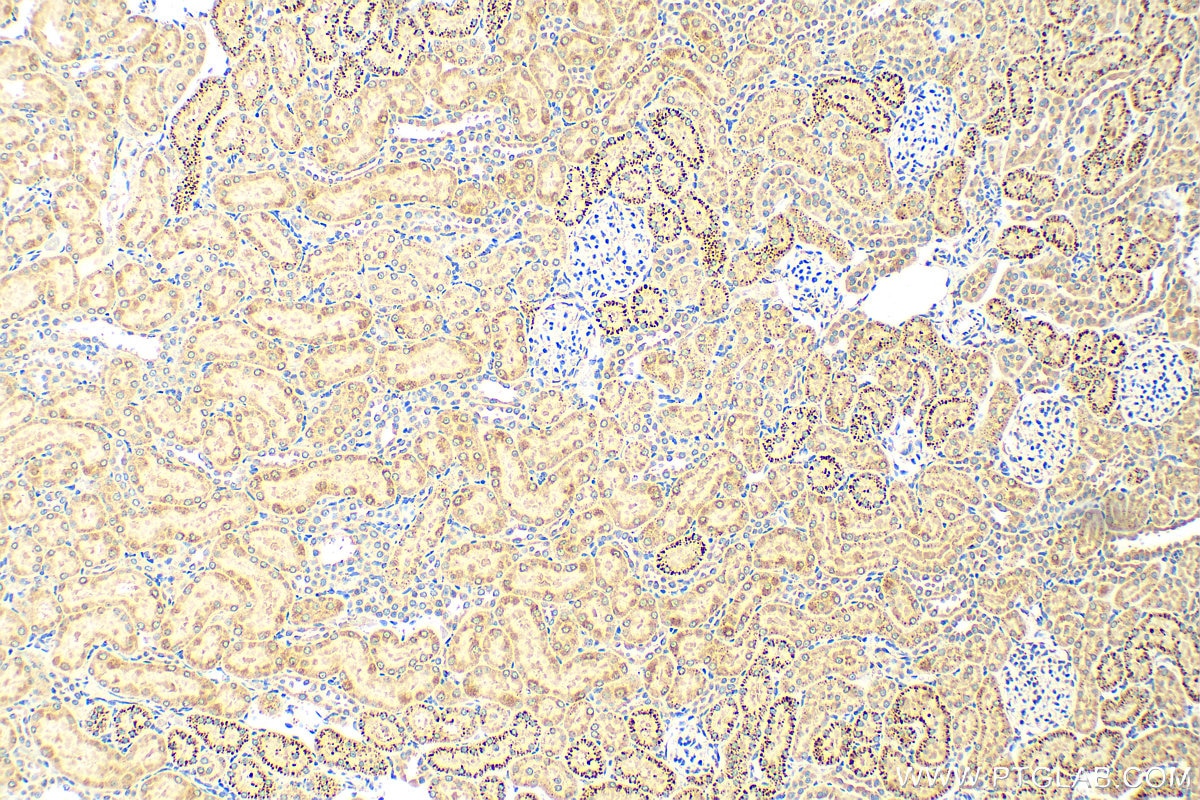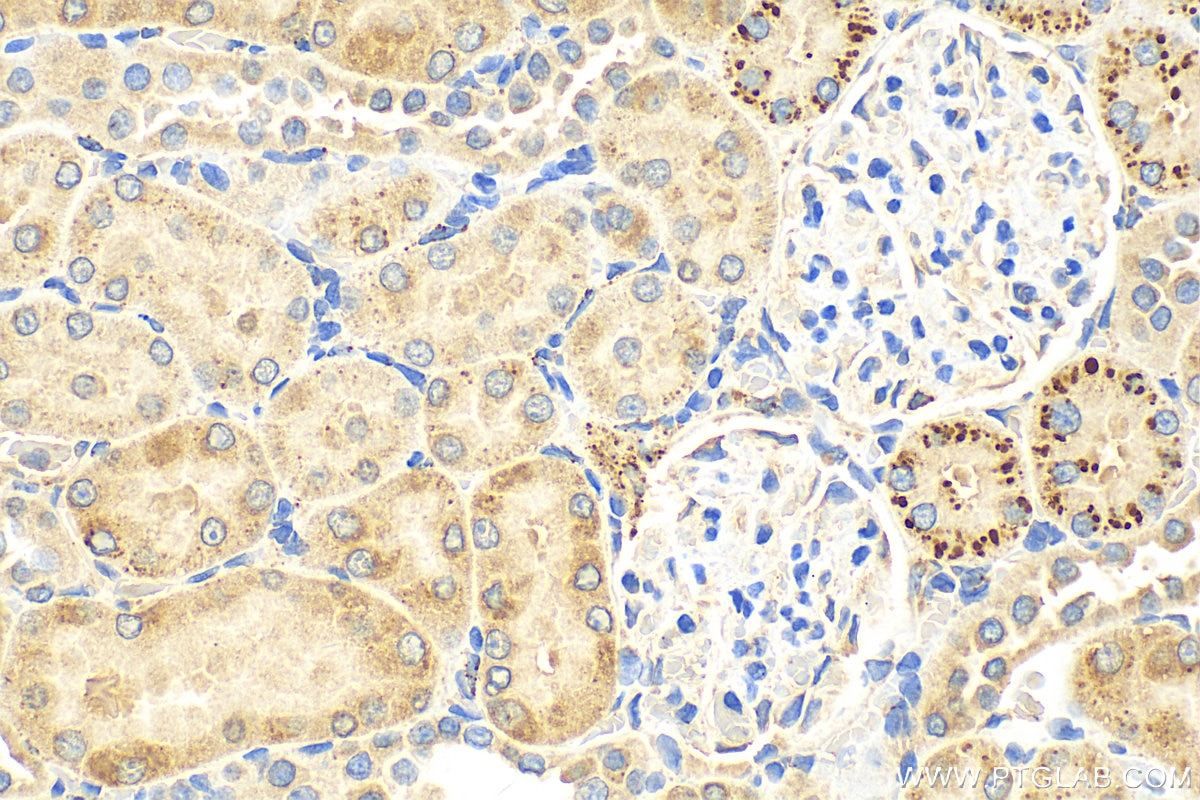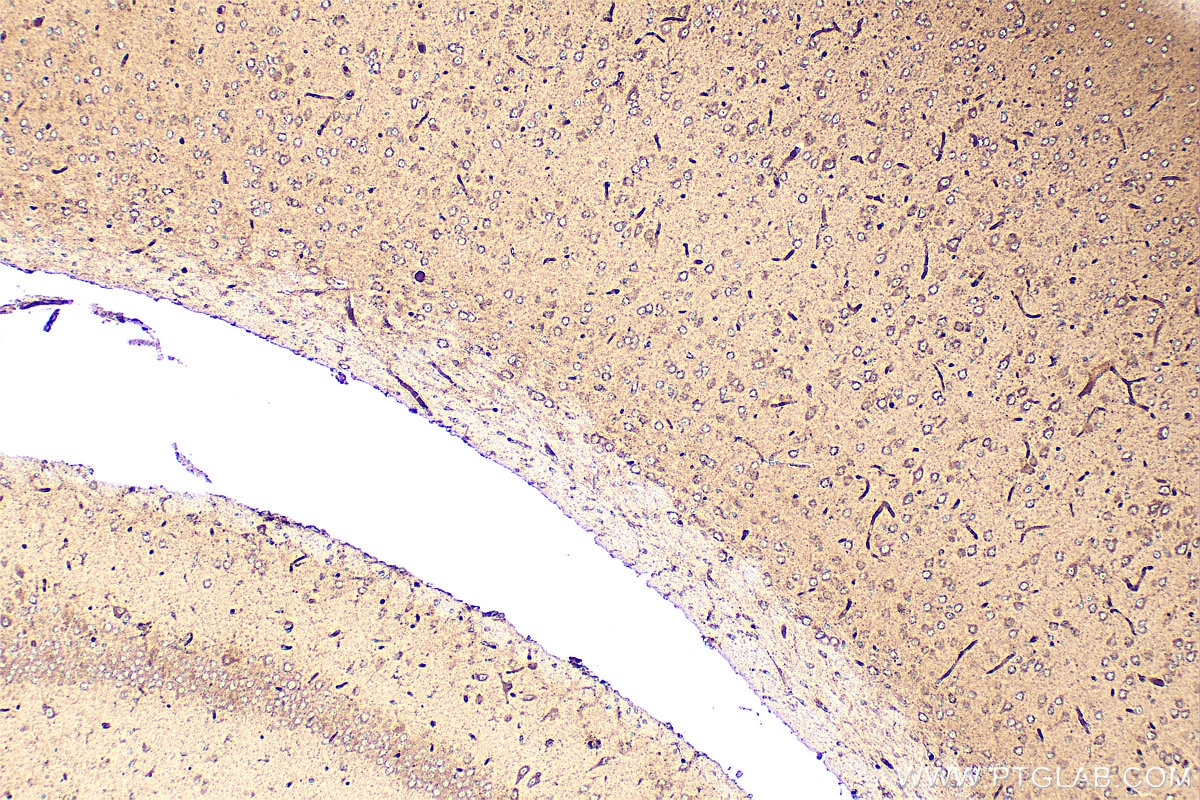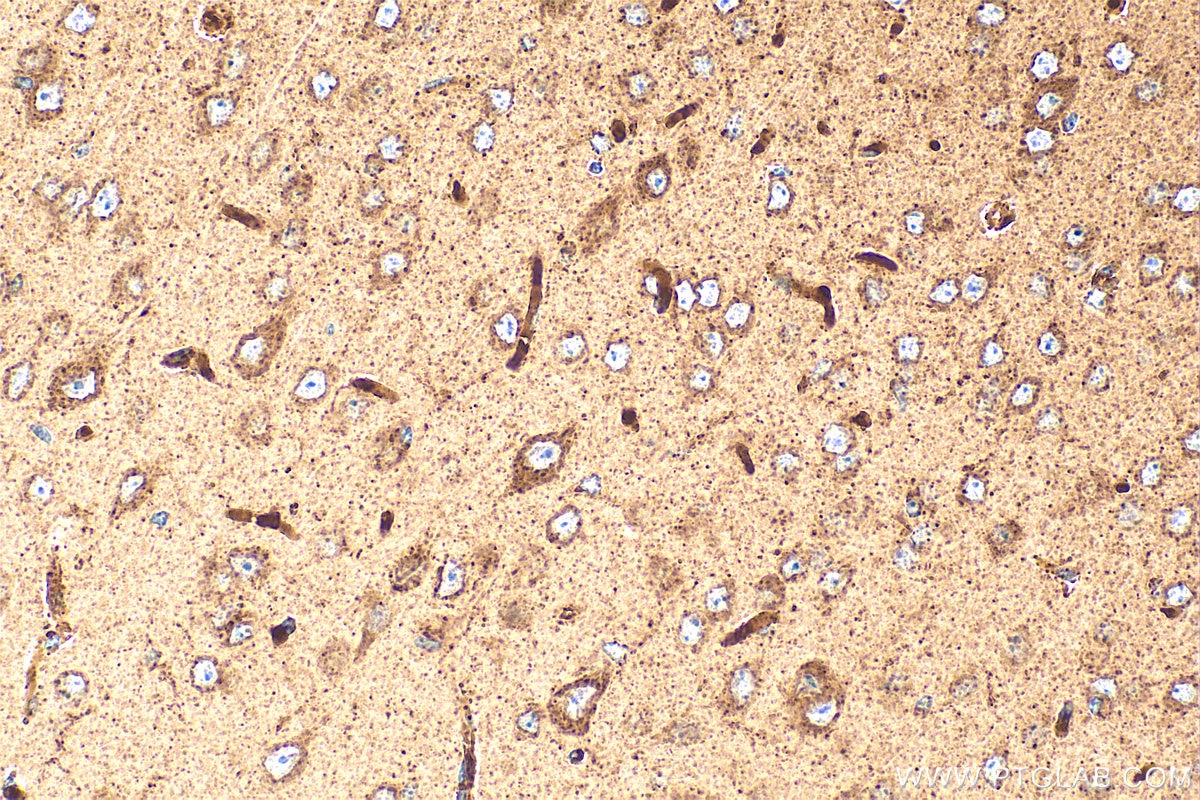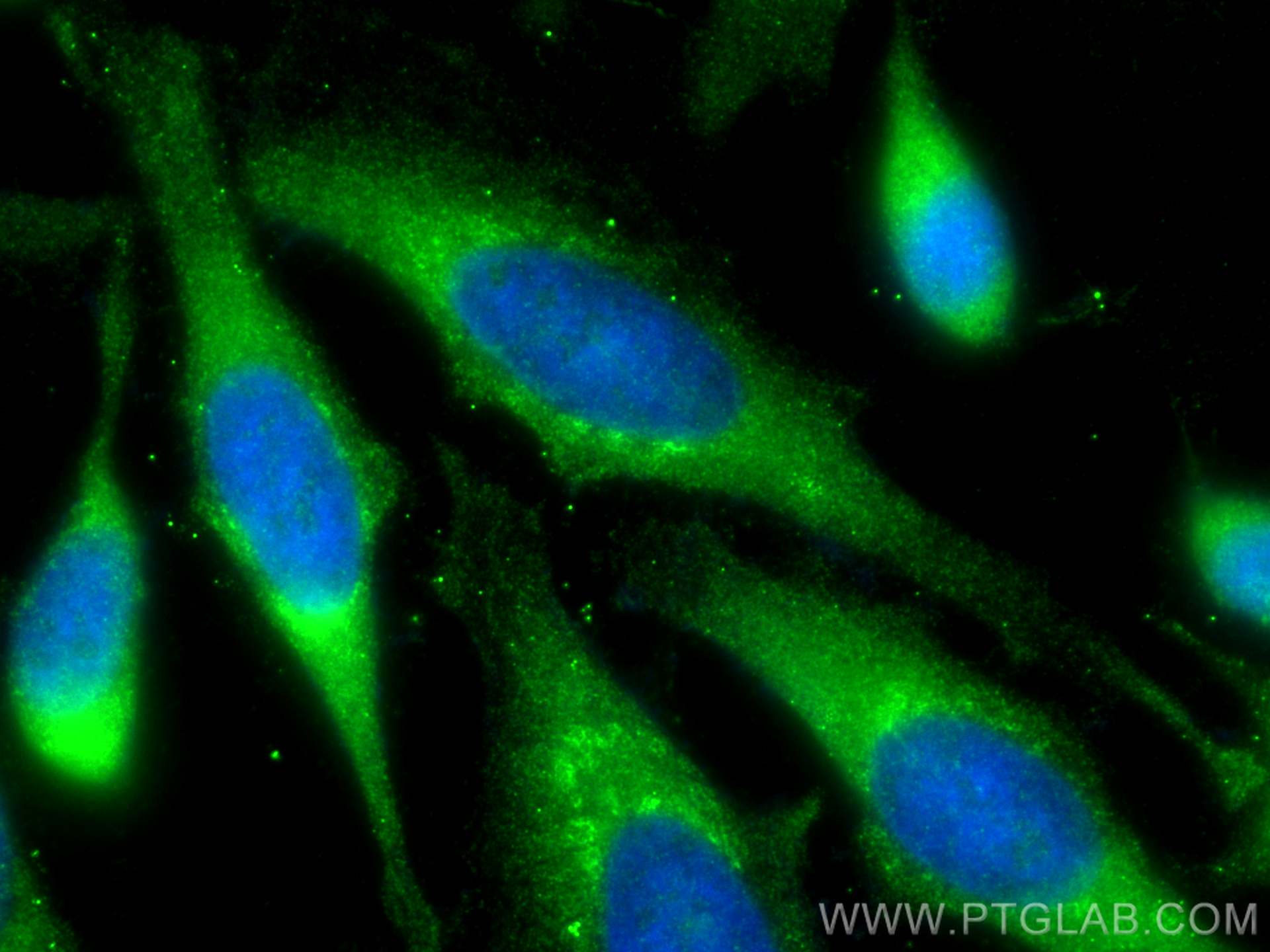- Featured Product
- KD/KO Validated
IFIT1 Polyklonaler Antikörper
IFIT1 Polyklonal Antikörper für WB, IHC, IF/ICC, ELISA
Wirt / Isotyp
Kaninchen / IgG
Getestete Reaktivität
human, Maus, Ratte
Anwendung
WB, IHC, IF/ICC, CoIP, ELISA
Konjugation
Unkonjugiert
Kat-Nr. : 23247-1-AP
Synonyme
Geprüfte Anwendungen
| Erfolgreiche Detektion in WB | IFN beta treated HeLa cells |
| Erfolgreiche Detektion in IHC | Mausnierengewebe, humanes Nierengewebe, Maushirngewebe, Rattennierengewebe Hinweis: Antigendemaskierung mit TE-Puffer pH 9,0 empfohlen. (*) Wahlweise kann die Antigendemaskierung auch mit Citratpuffer pH 6,0 erfolgen. |
| Erfolgreiche Detektion in IF/ICC | HeLa-Zellen |
Empfohlene Verdünnung
| Anwendung | Verdünnung |
|---|---|
| Western Blot (WB) | WB : 1:1000-1:4000 |
| Immunhistochemie (IHC) | IHC : 1:300-1:1200 |
| Immunfluoreszenz (IF)/ICC | IF/ICC : 1:200-1:800 |
| It is recommended that this reagent should be titrated in each testing system to obtain optimal results. | |
| Sample-dependent, check data in validation data gallery | |
Veröffentlichte Anwendungen
| KD/KO | See 3 publications below |
| WB | See 32 publications below |
| IHC | See 2 publications below |
| IF | See 4 publications below |
| CoIP | See 1 publications below |
Produktinformation
23247-1-AP bindet in WB, IHC, IF/ICC, CoIP, ELISA IFIT1 und zeigt Reaktivität mit human, Maus, Ratten
| Getestete Reaktivität | human, Maus, Ratte |
| In Publikationen genannte Reaktivität | human, Maus |
| Wirt / Isotyp | Kaninchen / IgG |
| Klonalität | Polyklonal |
| Typ | Antikörper |
| Immunogen | IFIT1 fusion protein Ag19691 |
| Vollständiger Name | interferon-induced protein with tetratricopeptide repeats 1 |
| Berechnetes Molekulargewicht | 478 aa, 55 kDa |
| Beobachtetes Molekulargewicht | 55 KDa |
| GenBank-Zugangsnummer | BC007091 |
| Gene symbol | IFIT1 |
| Gene ID (NCBI) | 3434 |
| Konjugation | Unkonjugiert |
| Form | Liquid |
| Reinigungsmethode | Antigen-affinitätsgereinigt |
| Lagerungspuffer | PBS with 0.02% sodium azide and 50% glycerol |
| Lagerungsbedingungen | Bei -20°C lagern. Nach dem Versand ein Jahr lang stabil Aliquotieren ist bei -20oC Lagerung nicht notwendig. 20ul Größen enthalten 0,1% BSA. |
Hintergrundinformationen
IFIT1, also known as glucocorticoid-attenuated response gene 16 protein (GARG-16), is a 463 amino acid protein belonging to the IFIT family. IFIT genes comprise a large family with three (IFIT1, IFIT2, and IFIT3) and four (IFIT1, IFIT2, IFIT3, and IFIT5) members in mice and humans, respectively. IFIT1 specifically bound virus PPP-RNA forms a complex with IFIT2 and IFIT3 to sequester the viral PPP-RNA and prevent virus replication.
Protokolle
| PRODUKTSPEZIFISCHE PROTOKOLLE | |
|---|---|
| WB protocol for IFIT1 antibody 23247-1-AP | Protokoll herunterladen |
| IHC protocol for IFIT1 antibody 23247-1-AP | Protokoll herunterladenl |
| IF protocol for IFIT1 antibody 23247-1-AP | Protokoll herunterladen |
| STANDARD-PROTOKOLLE | |
|---|---|
| Klicken Sie hier, um unsere Standardprotokolle anzuzeigen |
Publikationen
| Species | Application | Title |
|---|---|---|
Signal Transduct Target Ther TRAF3 activates STING-mediated suppression of EV-A71 and target of viral evasion | ||
Adv Sci (Weinh) Single-Cell Transcriptomic Analysis of Primary and Metastatic Tumor Ecosystems in Esophageal Squamous Cell Carcinoma | ||
Cancer Lett Induction of IFIT1/IFIT3 and inhibition of Bcl-2 orchestrate the treatment of myeloma and leukemia via pyroptosis
| ||
Int J Mol Sci Rubella Virus Triggers Type I Interferon Antiviral Response in Cultured Human Neural Cells: Involvement in the Control of Viral Gene Expression and Infectious Progeny Production | ||
J Neuroinflammation Progression of pathology in PINK1-deficient mouse brain from splicing via ubiquitination, ER stress, and mitophagy changes to neuroinflammation. | ||
Cell Oncol (Dordr) IFIT1 modulates the proliferation, migration and invasion of pancreatic cancer cells via Wnt/β-catenin signaling.
|
Rezensionen
The reviews below have been submitted by verified Proteintech customers who received an incentive for providing their feedback.
FH Christin (Verified Customer) (03-28-2023) | Very nice antibody for WB
|
